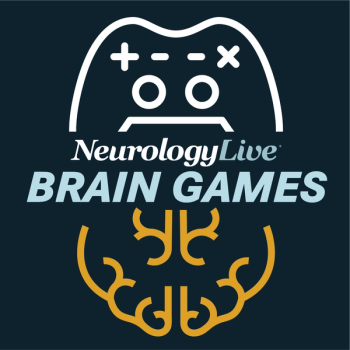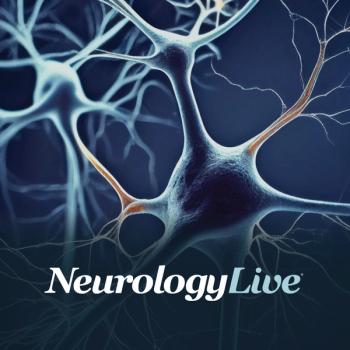
Geko’s Transcutaneous Tibial Nerve Stimulation Fails to Improve Lower Urinary Tract Symptoms in Parkinson Disease
Key Takeaways
- The STRIPE study found no significant improvement in LUTS for PD patients using the Geko TTNS device compared to sham treatment.
- Both active and sham groups showed similar improvements from baseline, with no significant differences in primary or secondary outcomes.
In this phase 2 trial, TTNS using the Geko device was safe and well tolerated but showed no significant benefit over sham in improving urinary symptoms in Parkinson disease.
Results from the phase 2 STRIPE study showed no significant improvement in lower urinary tract symptoms (LUTS) among patients with Parkinson disease (PD) treated with transcutaneous tibial nerve stimulation (TTNS) compared with sham. Although the study did not meet its primary endpoint, investigators emphasized that the findings specifically reflect the use of the Geko TTNS device and should not be generalized to TTNS as a whole.1
In this randomized controlled trial, patients with PD who had LUTS related to overactive bladder (OAB) were allocated to active TTNS treatment with the Geko device (n = 73) or sham (n = 75), for a 12-week period. The Geko device is a small, wearable neuromodulation system originally designed to stimulate the common peroneal nerve in the leg to improve blood circulation; however, in the context of TTNS, the device is repurposed to non-invasively stimulate the tibial nerve, which originates from the sacral spinal cord–the same region involved in bladder control.
Led by Matthew Smith, PhD, BMMS, consultant neurologist at the University of Bristol, the study used change in International Consultation on Incontinence Questionnaire-Overactive Bladder score (ICIQ-OAB) at 12 weeks as the primary end point. After 12 weeks of treatment, investigators observed no difference between those on TTNS and sham on the primary end point (coefficient, 0.48; 95% CI, –0.2 to 1.2; P = .17), although both active and sham groups showed improvements relative to baseline.
Coming into the study, the mean age of participants was 69.7 years, with a median duration of 6 years since PD onset. Despite similarities in baseline characteristics, those in the active group had lower levodopa equivalent dose, lower International Consultation on Incontinence Questionnaire female urinary tract symptoms (fLUTS) score, and nocturnal polyuria index. Throughout the study, 6 participants–5 on active and 1 on sham–discontinued the intervention within the 12-week period, while 133 remained on treatment by the follow-up consultation (95.7% of total).
After 12 weeks of treatment, not only was the mean total ICIQ-OAB main score not significantly different between arms (regression coefficient, 0.31; 95% CI, –0.5 to 1.1; P = .17), but neither was the bother subscore (regression coefficient, 1.68; 95% CI, –1.6 to 5.0; P = .24). Although there was a trend for the active intervention to have higher (and therefore, worse) ICIQ-OAB scores, this difference was consistent with chance. Notably, no significant difference was observed when controlling for unbalanced factors at baseline or stratification by sex or level of symptom severity.
"We selected the Geko device as an easy to use off the shelf solution that would be easier for a population with dexterity and potential cognitive issues to apply," the study authors wrote. "The rationale was to improve concordance and negate the drawbacks of TENS requiring placement of multiple electrodes, settings, and the trip hazard of wires. One consideration is that the nature of Geko stimulation simply provides less benefit than the typical 10 to 20 Hz frequency used in TENS paradigms."
Smith et al added, "With neuromodulation studies, there are near limitless variables that can be assessed (frequency, amplitude, duration, and interval), and it is important that the result of this study is considered only for 1 Hz TTNS with Geko."
Secondary analyses showed within-group improvements from baseline to week 12 in ICIQ-OAB total and bother scores, urgency episodes, and incontinence for both active and sham groups, though no significant differences were found between groups. A brief, isolated difference favoring sham stimulation was noted at week 2 for ICIQ-OAB scores, but this did not persist. Bladder diary metrics, quality of life, and global rating of change also showed no between-group differences, and per-protocol analysis confirmed these findings. Overall, while both groups improved over time, active stimulation offered no clear advantage over sham. Overall, TTNS with the Geko device was considered safe and well tolerated, with dropout rates that were favorably better than notable, previously completed studies.
Related Research
The STARTUP study, a 2022 trial published in Age Ageing, tested the effects of using an adhesive electrode to stimulate the TTNS to treat bladder dysfunction in PD. In this 240-patient randomized trial, investigators observed a statistically significantly lower score in the active group after 6 weeks in the International Prostate Symptom Score (mean difference, 12.5 [SD, 6.5] vs 10.9 [SD, 5.5]; effect size, –1.49; 95% CI, –2.72 to –0.25). Despite a high level of compliance, there were no statistically significant change in any other outcome.2
Another randomized controlled trial, published in 2015, evaluated the efficacy of TTNS and sham TTNS in patients with PD with LUTS. In this small-scale study, 13 patients attended treatment or sham twice a week during 5 weeks, with each session lasting 30 minutes. Following 5 weeks of treatment, those allocated to TTNS demonstrated statistically significant reductions in the number of urgency episodes (P = .004) and reductions in nocturia episodes (P <.01). In addition, urodynamic testing revealed that those in the active group had improvements in intravesical volume at strong desire to void (P <.05) and volume at urgency (P <.01) when compared with patients in the sham group.3
REFERENCES
1. Smith MD, Portlock GE, Cullen A, et al. Transcutaneous Tibial Nerve Stimulation for Overactive Bladder Symptoms in Parkinson's Disease: Results from a Phase II Randomized Control Trial (STRIPE). Movement Disord. Published online April 17, 2025. doi:10.1002/mds.30186
2. McClurg D, Elders A, Hagen S, et al. Stimulation of the tibial nerve-a randomised trial for urinary problems associated with Parkinson's-the STARTUP trial. Age Ageing. 2022;51(6):afac114. doi: 10.1093/ageing/afac114
3. Perissinotto MC, D’Ancona CAL, Lucio A, Campos RM, Abreu A. Transcutaneous tibial nerve stimulation in the treatment of lower urinary tract symptoms and its impact on health-related quality of life in patients with Parkinson disease: a randomized controlled trial. J Wound Ostomy Continence Nurs. 2015;42(1):94-9. doi: 10.1097/WON.0000000000000078
Newsletter
Keep your finger on the pulse of neurology—subscribe to NeurologyLive for expert interviews, new data, and breakthrough treatment updates.


































